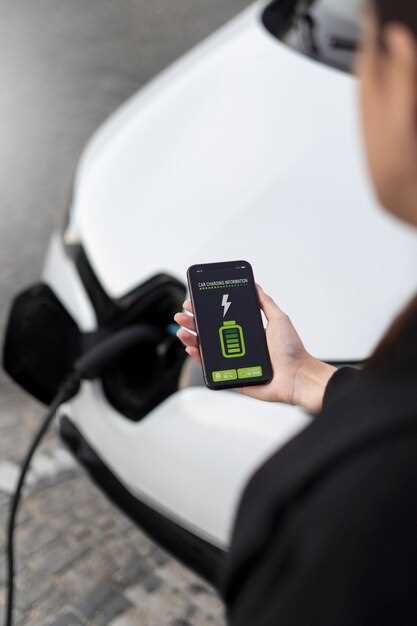
The shift towards electric vehicles (EVs) is transforming the transportation industry, and electric trucks are at the forefront of this revolution. As businesses increasingly adopt electric trucks to reduce carbon emissions and operational costs, understanding the intricacies of their charging systems becomes essential. The charging infrastructure for electric trucks differs significantly from that of passenger vehicles, necessitating a deeper knowledge of the various charging options available.
Charging electric trucks involves several critical considerations, including charging speed, range, and the types of charging stations available. Unlike lighter electric vehicles, trucks require more energy to operate due to their size and payload capacity. This leads to a greater demand for high-capacity charging solutions. Fleet operators must carefully evaluate their charging strategies to ensure that trucks remain operational while minimizing downtime.
Another important aspect to consider is the location and availability of charging stations. As electric trucks often travel long distances, it is vital for businesses to map out charging points along their routes. The deployment of fast charging infrastructure plays a crucial role in enhancing the viability of electric trucks for long-haul transport. Additionally, understanding the advancements in battery technology and charging systems will be instrumental for stakeholders in the logistics and transportation sector.
Charging Electric Trucks: What You Must Know
Charging electric trucks involves several critical considerations that fleet managers and operators must understand to optimize efficiency and performance. With the increasing adoption of electric trucks in logistics and transportation, knowing how to effectively charge these vehicles is essential.
Charging Infrastructure: The first step in transitioning to electric trucks is establishing a reliable charging infrastructure. This includes identifying locations for charging stations, assessing the power requirements, and ensuring the availability of adequate electrical supply. Public charging networks, dedicated depot chargers, and fast-charging stations are vital components of this infrastructure.
Charging Types: Electric trucks can utilize various charging methods. Level 1 charging, suitable for overnight charging at home or depots, uses standard household outlets. Level 2 charging, requiring a 240-volt outlet, can supplement overnight charging and is typically found in public charging stations. DC fast charging is the most efficient method for rapid recharging during breaks, making it ideal for long-haul operations.
Charging Time and Range: Operators must consider the charging times associated with each method. Level 2 chargers take several hours, while DC fast chargers can significantly reduce this time to around 30-60 minutes for substantial range replenishment. Understanding the range of electric trucks, often between 200-400 miles depending on the model and load, is crucial for route planning.
Cost Analysis: Evaluating the cost of charging is integral. The price of electricity can vary greatly by location and demand. Fleet managers should analyze operational charging costs against traditional fuel expenses to determine economic viability. Additionally, consider potential incentives and tax credits for adopting electric vehicles and infrastructure.
Battery Health and Maintenance: Ensuring the longevity and efficiency of electric truck batteries is important for overall performance. Implementing routine maintenance checks, monitoring charging cycles, and avoiding extreme charging conditions can help extend battery life. Operators should also be aware of manufacturers’ recommendations regarding charging practices to maintain optimal battery health.
Future Trends: The electric truck industry is rapidly evolving. Advancements in battery technology and charging solutions could further decrease charging times and increase vehicle range. Additionally, integrating renewable energy sources into charging practices could enhance sustainability and lower operating costs.
Understanding these essential aspects of charging electric trucks is key for successful integration and operation within the evolving landscape of electric transportation.
Understanding Charging Infrastructure for Electric Trucks
The charging infrastructure for electric trucks is a critical component in the transition to sustainable transport. It encompasses various elements essential for ensuring that electric trucks can operate efficiently and effectively across different regions.
First, one must consider the types of charging stations available. There are mainly three categories: Level 1, Level 2, and DC fast charging. Level 1 chargers are typically used for home applications, providing a slow charge through standard household outlets. Level 2 chargers are faster and often found in commercial settings, while DC fast chargers offer rapid charging capabilities, significantly reducing the downtime of electric trucks on long-haul routes.
Another vital aspect is the location of charging stations. Strategic placement is necessary to maximize accessibility. These stations should be situated in logistics hubs, along major highway corridors, and at key rest areas to support the needs of long-distance transport. The goal is to minimize the distance between charging points, thus alleviating range anxiety for fleet operators.
Furthermore, the infrastructure must be capable of handling varying charging capacities. Electric trucks generally have large battery packs, requiring substantial power output to charge efficiently. It’s crucial to design the network to accommodate high wattages while considering the local grid capacity to avoid overloading existing electrical systems.
Integration with renewable energy sources is another important consideration. Charging stations that utilize solar or wind energy can reduce the carbon footprint associated with electric truck operations. This not only contributes to sustainability but also helps in reducing operational costs over time.
Finally, payment systems and interoperability are essential for a seamless user experience. Fleet operators must have access to various payment options, and charging networks should ensure compatibility across different manufacturers’ vehicles. This facilitates ease of use and broadens the market for electric trucks.
In conclusion, understanding the intricacies of charging infrastructure is pivotal for the successful deployment of electric trucks. By focusing on charger types, strategic location, power capacity, renewable integration, and payment interoperability, stakeholders can help pave the way for widespread electric vehicle adoption in the trucking industry.
Comparing Different Charging Technologies and Their Impact

As the electric truck market evolves, various charging technologies emerge, each offering unique advantages and challenges. Understanding these differences is crucial for fleet operators, policymakers, and manufacturers. Here are the key charging technologies and their impacts:
-
AC Charging:
Alternating Current (AC) charging is the most common method used in electric vehicles. This technology utilizes onboard chargers to convert AC power into DC, which is then stored in the vehicle’s battery. Key points include:
- Widely available infrastructure.
- Lower installation costs.
- Typically slower charging rates, requiring longer downtime.
-
DC Fast Charging:
Direct Current (DC) fast charging allows for much quicker charging times by bypassing the onboard charger and delivering power directly to the battery. Benefits include:
- Rapid charging capabilities, often achieving 80% in 30 minutes.
- Ideal for long-haul routes where time efficiency is critical.
- Significantly higher installation costs and limited availability in some regions.
-
Wireless Charging:
This emerging technology uses electromagnetic fields to transfer energy without physical connectors. Its advantages are:
- Increased convenience, as it eliminates the need for plugging in.
- Potential for dynamic charging, allowing trucks to recharge while driving on equipped roadways.
- Current high costs and technical challenges limit widespread implementation.
-
Battery Swapping:
Battery swapping technology replaces a depleted battery with a fully charged one in a matter of minutes. Considerations include:
- Minimized downtime for fleet operations.
- Requires significant investment in battery inventory and standardization.
- Challenges in maintaining battery health and uniformity across fleets.
-
Ultra-Fast Charging:
Ultra-fast chargers provide extremely high power levels, significantly reducing charging time. Their impact comprises:
- Competitive charging speeds comparable to diesel refueling.
- Supports heavy-duty electric trucks and large fleets effectively.
- Infrastructure demands and significant upfront costs are barriers to widespread adoption.
In conclusion, the choice of charging technology greatly influences operational efficiency, cost-effectiveness, and overall sustainability of electric truck fleets. Each technology presents unique characteristics that cater to different business needs and infrastructure capabilities, making it vital for operators to carefully analyze their requirements before adopting a specific charging solution.
Planning Optimal Charging Strategies for Fleet Operations

Efficient charging strategies are critical for maximizing the operational effectiveness of electric truck fleets. Understanding the unique requirements of your fleet, including usage patterns, long-haul routes, and charging infrastructure, enables strategic planning.
Start by analyzing your fleet’s daily miles and peak usage periods. This data will inform how much energy is needed to keep vehicles operational without interruptions. Accurate forecasting allows for the integration of charging times into daily schedules, ensuring that vehicles are charged during off-peak hours, minimizing operational downtime.
Utilize a combination of charging types–level 2 chargers for overnight or long-term parking and DC fast chargers for rapid refueling during short breaks. This hybrid approach allows for flexibility and efficiency, taking advantage of both slower, cost-effective charging and faster options when necessary.
Implement real-time monitoring and management systems to track energy consumption and battery levels. This technology can provide insights into optimal charging times and detect potential issues before they impact operations. Automated alerts about charging status can also help fleet managers make informed decisions proactively.
Consider geographic distribution when establishing charging stations. Ensuring that charging infrastructure aligns with routes can reduce detours and charging times. This strategic placement not only enhances efficiency but also contributes to route optimization and time savings.
Lastly, engage with utility providers to explore special tariffs for electric vehicle charging. Some companies offer reduced rates during specific hours, aligning perfectly with the charging needs of fleet operations. Negotiating these agreements can lead to significant savings on electricity costs.



